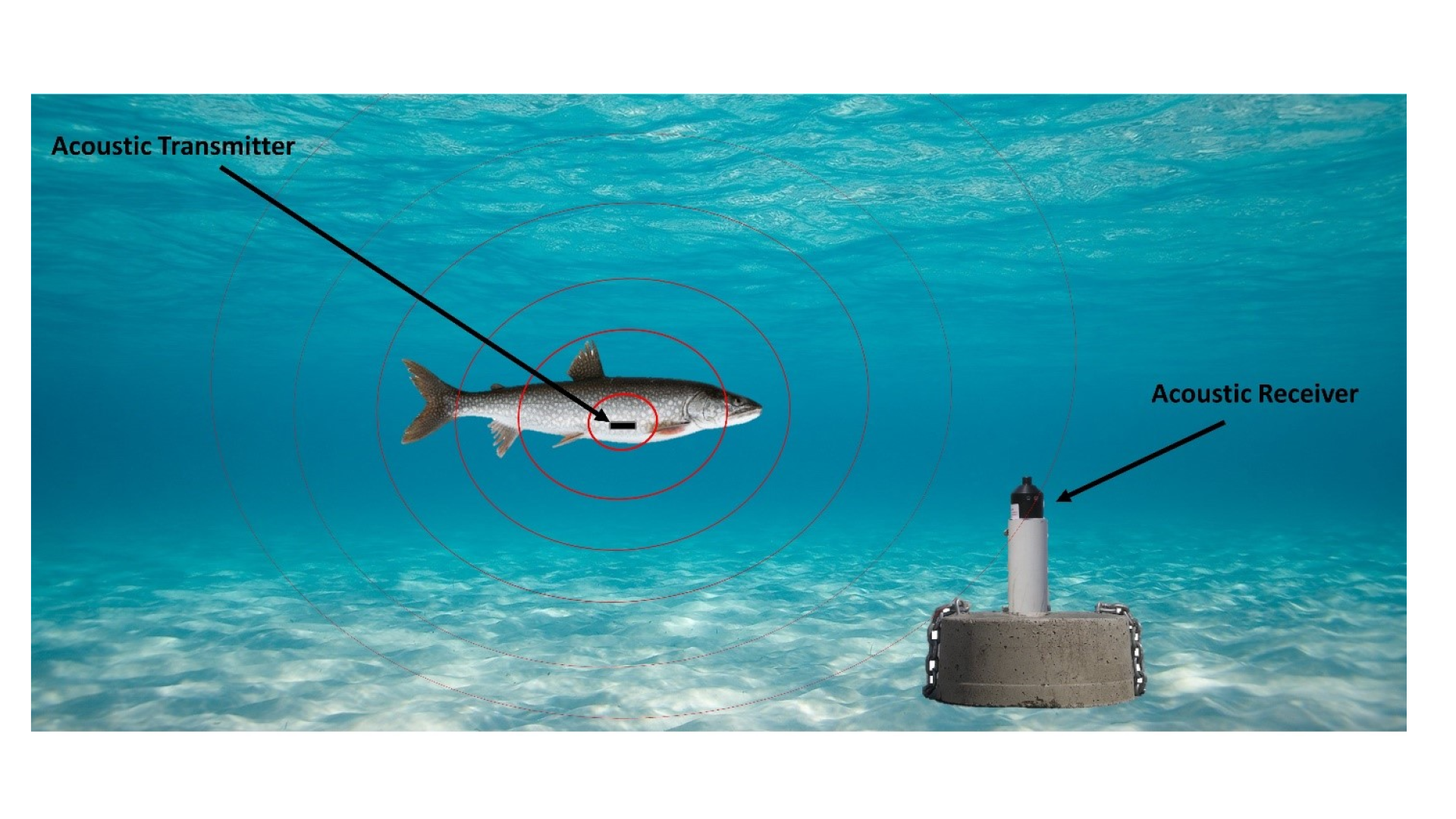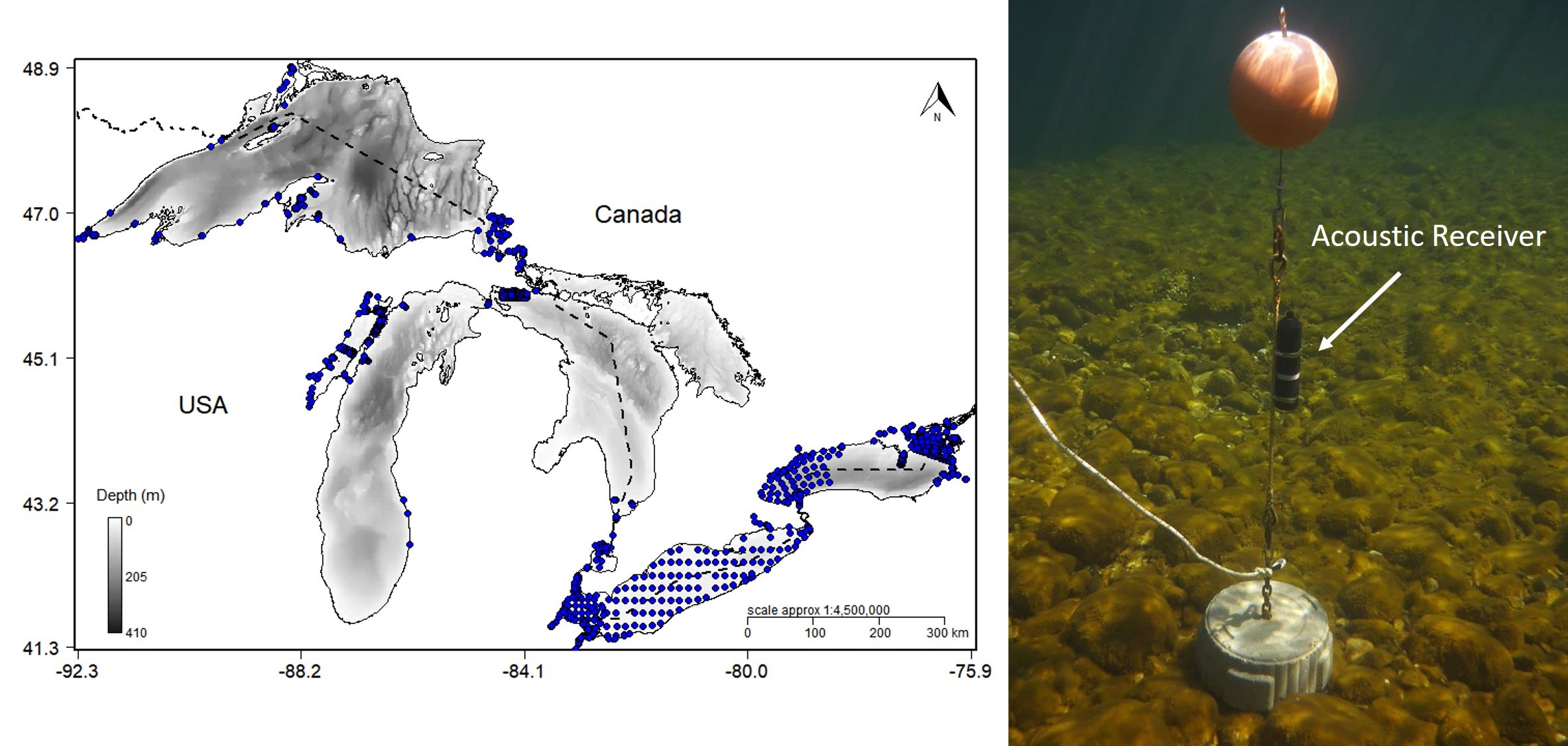
Anyone who’s watched fish swim around an aquarium for even a short amount of time knows it’s quite fascinating. One minute the fish are resting quietly at the bottom or loafing near the surface, the next they’re frantically swimming around, chasing each other, darting in and out of the tank decorations. But have you ever wondered how scientists observe fish behavior in the wild? For example, the Great Lakes?
To understand fish behavior and movement in natural environments, scientists typically use direct observation, such as following fish around underwater with snorkeling or scuba gear or tagging a fish and relying on someone to report where it was eventually caught.
In 2010, the Great Lakes Acoustic Telemetry Observation System research initiative started tracking individual fish using advanced telemetry to understand the mysteries of Great Lakes fish behavior. GLATOS is primarily funded through the US Great Lakes Restoration Initiative along with state, federal, provincial and tribal natural resource agencies in Canada and the United States.

The impetus of this research was to provide fishery managers with needed information regarding the movements and behavior of native fish to aid in conservation and restoration efforts and inform aquatic invasive species management.
The Great Lakes Acoustic Telemetry Observation Systems, or GLATOS for short, consists of a series of underwater acoustic telemetry receivers deployed throughout the Great Lakes basin to monitor the movements of fish tagged with acoustic transmitters.
When a tagged fish swims close enough for a receiver to “hear” the unique signal emitted by the transmitter, this information is recorded and stored on the receiver until it is downloaded at a later date. In some instances, this information can be monitored in real time.
In addition to being able to identify the presence or absence of individual fish, researchers can determine what temperature or water depth a fish is occupying if the transmitter is programed to record this type of information.
To date, fish as large as lake sturgeon (almost 2 meters or up to 6 feet long) and smaller fish such as yellow perch have been successfully tagged and tracked throughout the Great Lakes.
As of August 2020, more than 13,000 individual fish representing 47 different species have been tagged and released as part of this research endeavor, resulting in close to 390 million detections or data points. There are now more than 1,600 active acoustic receiver deployments associated with the GLATOS network. In addition to better understanding population demographics like survival and movement rates, GLATOS researchers are providing fishery managers with important information regarding broad- and fine-scale habitat use of native and non-native fish species across the basin.
For example, acoustic telemetry has been used to evaluate spawning behavior and habitat selection of lake trout near Drummond Island in Lake Huron and movements of lake trout and lake sturgeon throughout the Huron-Erie Corridor St. Clair River, Lake St. Clair and the Detroit River.

Telemetry data also has played an important role evaluating current methods and developing new control strategies for aquatic invasive species such as sea lamprey and grass carp.
Additionally, while most research conducted to date focused on understanding where and when fish move (or remain) in a particular area, in the future researchers hope to gain a better understanding of why fish occupy a particular area and how environmental conditions influence movement and behavior.
For example, researchers and managers need answers to questions like: How do fish relate to harmful algal blooms? Do fish alter their behavior when blooms develop? Are they more or less vulnerable to predators when blooms develop? Additionally, how do fish react to areas that experience low dissolved oxygen levels that develop during the summer, like in the western and central basins of Lake Erie, Lake Huron and Saginaw Bay, and Lake Michigan and Green Bay?
By understanding fish movement and behavior, fishery managers can better manage these ecologically and economically important resources throughout the Great Lakes.

Christopher S. Vandergoot is the director of the Great Lakes Acoustic Telemetry Observation System and associate professor at Michigan State University.




